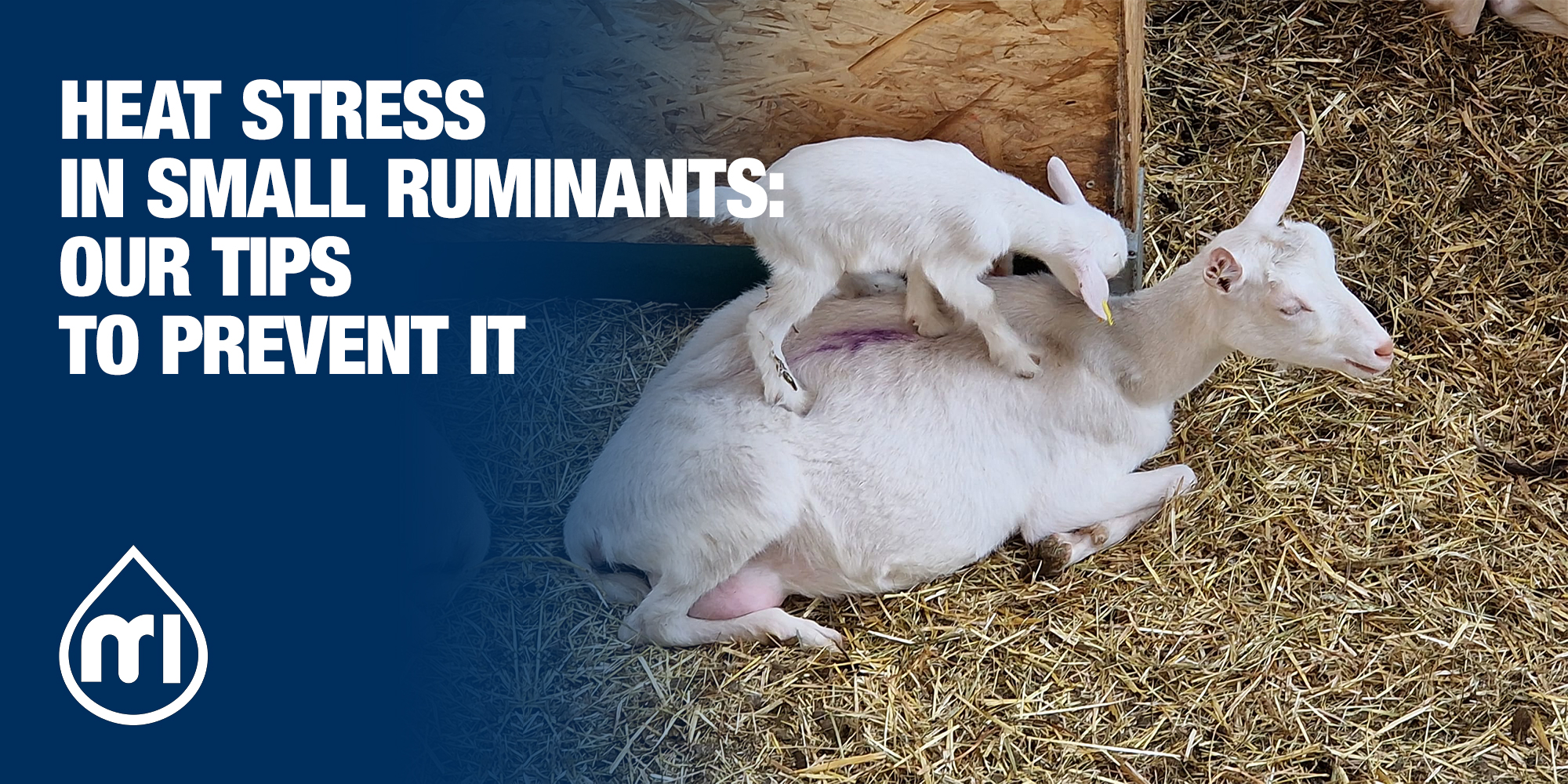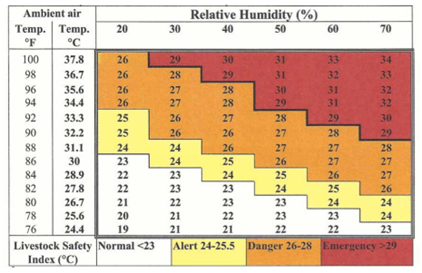
Heat stress in small ruminants: Our tips to prevent it
What you need to know about how to recognize, manage, and prevent heat stress in small ruminants.
In the previous Blog episode, we demonstrated how heat stress manifests in small ruminants and how to manage the animals in order to relieve the symptoms.
However, it is time to focus on how hyperthermia can be prevented and what actions can be preventively taken to set the proper basis to face the next hottest months of the year, preventing your animals from suffering and your farm profitability from decreasing. Let’s find this out with the help of our Regional Sales Managers Nicolo Dessì and Abdelrahman El Ashkar.
Understanding when your animals are in danger with the Livestock Safety Index
The first factor to consider is the Temperature Humidity Index (THI), which means that the higher the temperature and humidity, the greater the danger to your sheep and goats’ health. To measure this relationship and alarm farmers of potential risks, the following Livestock Safety Index Chart has been designed.

The chart contains four categories:
- Livestock normal, below 23°C.
- Livestock alert, from 24 to 25.5°C. In this range, the first heat stress indicators might appear, and precautionary measures should be taken.
- Livestock danger, from 26 to 28°C. Confined animals could really be in danger.
- Livestock emergency, above 29°C. Typical conditions with excessively high temperature and humidity with no air movement for several consecutive days, which could be seriously harmful for animals, if not managed correctly.
Environmental and morphological factors affecting heat tolerance
The THI, however, is only one of the several environmental factors that should be monitored when preventing heat stress.
With this in mind, other external elements to keep an eye on when making sure to minimize heat stress are wind speed and solar radiation. When air ventilation is lacking, temperatures tend to rise, representing a danger for animals, which can be further enhanced when combined with intense sun exposure.
On the morphological side, heat tolerance depends on:
- This determines differences in adaptation to elevated temperatures and radiation through efficient thermoregulation, adaptation to water restriction, and feed scarcity.
- Smaller body-sized animals require less feed and water and have better feed conversion ratio.
- Both young and geriatric animals are more susceptible to hyperthermia.
- Hair layer thickness. Since it helps dissipate heat, the thicker it is, the better tolerance the animal will have.
- Coat colour. The lighter it is, the more resistant the animals will be to heat stress.
- Tail fat. Sheep with this physical trait adapt better to hot environments, as not only does the fat stored in the tail allow better heat transfer, but it is also an additional energy and water supply in case of dietary restriction.
Key actions to put in place to protect your herd from heat stress
Having seen how heat stress can limit milk production and reproduction traits in small ruminants, it is time to investigate how to prepare animals to tackle the hottest summer months. Here are some timely, beneficial interventions that could stimulate heat stress tolerance and improve welfare:
- Shearing sheep in spring ensures the wool is long enough to protect sheep from sunburn while keeping them cool.
- Reformulating diets, foreseeing the nutrient requirements, and ensuring adequate energy supply to face the heat load. Betaine, vitamins E, C, and Selenium turned out to be good for improving thermoregulatory responses, reducing heat stress symptoms, and improving animal health.
- Making sure the barn environment is suitable to host animals in summer: aeration and cooling systems properly work granting air circulation and enough shaded areas available for all animals.
- Relying on tools that help you spot any issue at the right time. Installing milk meters to monitor milk production and quality per animal enables promptly spotting any abnormality and develop suitable nutritional strategies, according to each animal’s needs, to avoid waste and minimize health issues.
At this point, it is clear how heat stress tolerance depends on a combination of both environmental and physical traits of small ruminants. Underestimating one of these aspects can put at dire stake their health and the efficiency of the farm, through serious infections, a decrease in milk production, and even the death of the animal.
Take care of your sheep and goats: be sure to put our advice into action and don’t forget to read our next Blog episode for more insight on how to prioritize animals’ well-being!
Sources:
- Code of Practice for the Care and Handling of Sheep – National Farm Animal Care Council, 2021
- Heat stress in sheep and goats Schoenian – Maryland Small Ruminant Page, 02/18
- Heat Stress in Small Ruminants Froehlich – South Dakota State University Extension, 05/23
- Resilience of Small Ruminants to Climate Change and Increased Environmental Temperature: A Review Joy, Dunshea, Leury, Clarke, DiGiacomo, Chauhan – MDPI, 05/20
- Shielding grazing dairy cows from heat stress: effective strategies for farm management and cow welfare Malacco – Michigan State University Extension Dairy, 06/23
